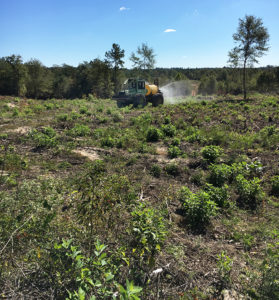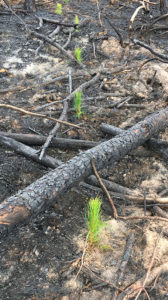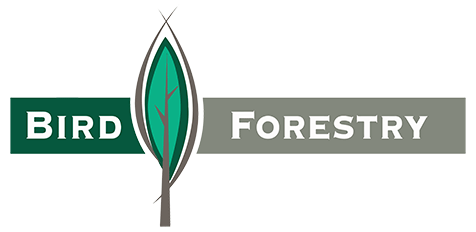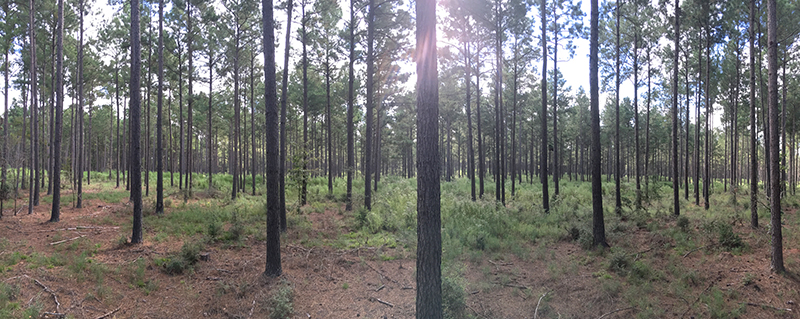
Principal / Forester
Reforestation, the process of renewal during which a new stand of trees is regenerated on a forest site, is an ongoing activity in a managed tract of land that requires careful planning and starting early. Planning and preparation for sites scheduled for reforestation in 2020 are already underway.
Reforestation may be needed following a disturbance such as fire, wind storm, disease mortality, or logging and requires knowledge of the forest site, the species involved, risks and constraints and the establishment techniques available.
Reforestation can be accomplished in several ways:
1. Let nature handle it (natural regeneration)
2. Assist nature (seed tree selection, site preparation)
3. Shortcut nature (artificial regeneration)
4. A combination of the above methods.
Here at Bird Forestry, we have been helping landowners determine the best course of action and formulate specific reforestation plans with successful outcomes for more than 40 years. While plans are tailored specifically for individual tracts and landowner goals, for purposes of general information, the following guidelines focus on artificial regeneration of loblolly pine.
Site Assessment
Reforestation strategies are determined on the basis of an ecological and silvicultural assessment of the site which is normally carried out prior to or just after final harvesting. Site assessment looks at the physical and productive characteristics of the site including soil characteristics, drainage, moisture regime, and nutrient status and capability. The site assessment also looks at what species are currently growing on site as well as any potential constraints to reforestation including unwanted brush competition, forest health issues, and wildlife concerns.
 Site Preparation
Site Preparation
Site preparation is treating land to improve planting conditions, encourage the germination of seed or growth of seedlings, and promote survival of the desired species. The method, intensity, and timing of site preparation activities should suit the specific site, and Bird Forestry plays an active role in all of these activities.
Site prep is often started with a herbicide application. Herbicides are site specific based on the species to be controlled, soils, proximity to streams and sensitivity of adjacent vegetation.
Applying herbicides in preparation for planting trees is generally done with a helicopter or skidder, broadcasting a herbicide mixture to control woody vegetation and future root sprouts which compete with newly planted seedlings and affect survival and growth.
Chemical site prep is often followed by a prescribed burn in order to help clean up a site making it more accessible for seedling planting in the months to come. Burning is an economically sound practice on many pine sites, either alone or in conjunction with some other mechanical or chemical method of site preparation.
 Planting
Planting
Seedling planting usually takes place in the winter months between December and the beginning of March for the East Texas / Western Louisiana area. Seedlings are planted in a couple of different methods, usually by hand or mechanically. The method will be decided early in the reforestation planning and some of the site prep activities required may change depending on the method selected.
Weed Control
Herbaceous weed control is typically performed the spring following pine planting. A possible alternative to spring application is to add a herbicide capable of herbaceous weed control into a chemical site prep mix and broadcasting the fall prior to planting. This can reduce or eliminate the need for a follow-up application in the spring, although it does depend on the particular reforestation strategy employed.
Many steps are necessary to successfully establish a new stand after a final harvest including some that extend beyond planting seedlings.
Decades of experience managing and marketing forest products for our clients affords Bird Forestry an extensive knowledge and understanding of the importance of the planning and investment required for reforestation.
Let our experience here at Bird Forestry make your reforestation experience a good one.




